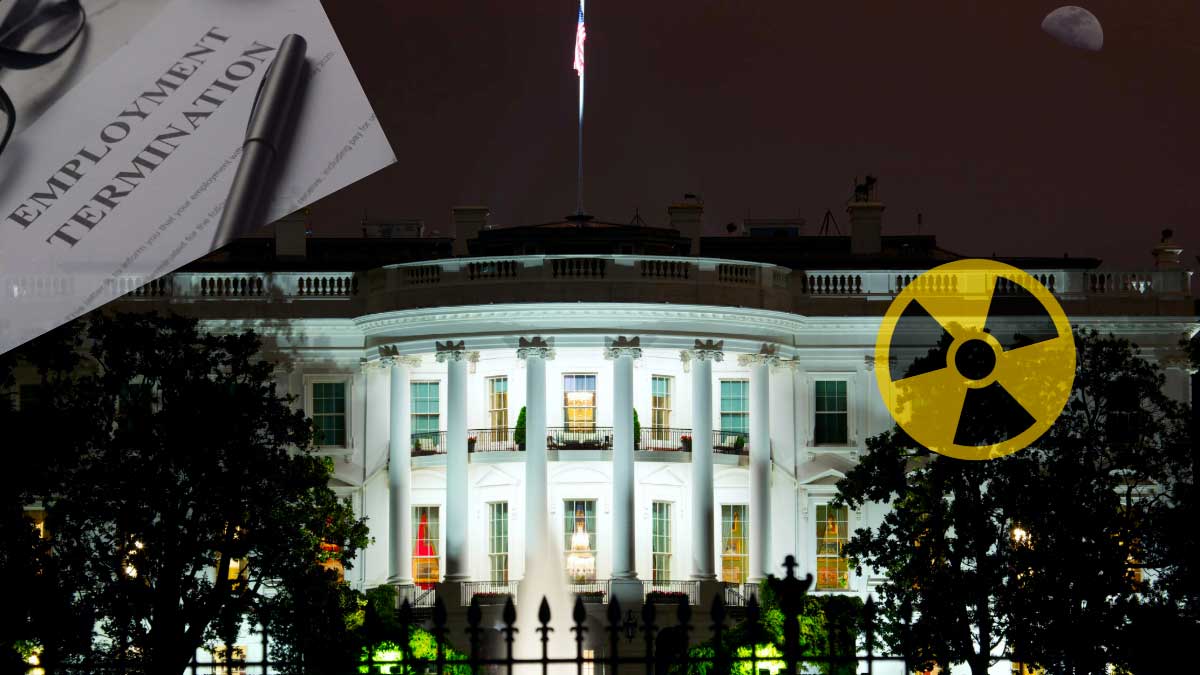Breaking News
Hundreds of Nuclear Experts Fired with no Regard to National Security
Elon Musk’s led DOGE fired almost 400 employees responsible for nuclear weapon production and security.

[WBHG NEWS] – On Friday, Elon Musk’s so-called Department of Government Efficiency (DOGE) fired approximately 400 employees from the National Nuclear Security Agency (NNSA), which is part of the Department of Energy (DOE).
The layoffs included almost 30% of the staff at the Pantex Nuclear Weapons Facility in Texas, security and maintenance experts, and foreign-based monitors meant to prevent nuclear proliferation. Included in the terminations were Ukrainian monitors meant to ensure the war-torn country doesn’t restart a nuclear weapons program in compliance with the 1994 Budapest Memorandum.
Also fired was most of the team responsible for producing and protecting replacement plutonium cores for the U.S. nuclear weapons stockpile. This action was taken despite a mandate by the first Trump administration to expand the production of cores, also known as pits, by 2030, which is part of an ongoing U.S. nuclear weapons modernization program.
Less than 24 hours later, the damage to national security had become clear, and the DOE was scrambling to rehire more than 300 employees.
It is a misconception that the DOE focuses on conservation, green energy, car electrification, and LED light bulbs. Since its creation, the main function of the DOE has been to regulate, protect, produce, and maintain the U.S. nuclear energy and weapons programs. Conservation and alternative energy research and development programs were expanded in the 1970s. The charter was further expanded by the George W. Bush Energy Policy Act of 2005 and the Energy Independence and Security Act of 2007.
According to the U.S. Government Accountability Office (GAO), the Department of Defense (DOD) and the DOE were mandated to increase pit production from 30 per year to 80 by the end of the decade. In 2018, the NNSA submitted a plan to produce 30 pits at Los Alamos, New Mexico, and 50 more at the Savannah River Lab in South Carolina. Congress received an update in 2020, which concluded that the $350 billion project was at least two years behind schedule. Congressional reports in 2021, 2023, and 2024 show that little progress has been made to speed up production.
During the Cold War, the U.S. was capable of producing up to 1,000 pits per year, ending large-scale production in 1989. The almost complete stop occurred during an era of detente with the Soviet Union and ongoing nuclear disarmament. The same GAO report about expanding modern production noted that only a limited number of pits have been produced since 1989, and the last war reserve pits were built in 2012.
The U.S. uses Plutonium-239 to make nuclear cores, which have a half-life of 24,110 years. Despite the millennia-long decay rate, it is estimated that after 30 to 35 years, there is enough decay to impact explosive yield. It is not suggested that the U.S. nuclear arsenal would not work, just that the explosive power could be different from what is expected. In 2023, the NNSA asked Congress for $1 billion to conduct additional research on the decay rate to determine exactly when the pits need to be replaced.
Nations that started their nuclear weapons program prior to 1980 have similar challenges. The United Kingdom, France, Russia, and India also have aging nuclear arsenals, with Pakistan not far behind. While China tested its first nuclear bomb in 1964, it recently started expanding its arsenal, with a goal of having 1,000 nuclear warheads by 2030. That would make China a near-peer of Russia and the United States with the most modern warheads on the planet.
In 2021, the U.S. allocated $64 billion to maintain its existing nuclear stockpile, equivalent to the entire published military budget of the Russian Federation. While the NNSA’s annual report to Congress on pit production is publicly available, Moscow keeps its production data classified. Most experts believe that Russian nuclear readiness is in worse condition than the U.S., France, and the U.K.
Over the weekend, government officials said they were having a hard time tracking down the terminated employees, lacking active e-mail addresses and phone numbers in their records. Some of the fired workers didn’t find out they were released until they tried to show up to work or access secured online systems.
The DOE can trace its roots to the Atomic Energy Commission, which was formed in 1946 after the success of the Manhattan Project and the end of World War II. In 1977, the Carter Administration combined several government commissions and agencies, as well as the U.S. nuclear research labs, into the DOE. The agency also received the added charter of formulating policies for energy security and conservation, partially in response to the 1973 Arab Oil Embargo. Despite the expanding role of U.S. energy policy, the core function of the DOE remains nuclear-focused.








